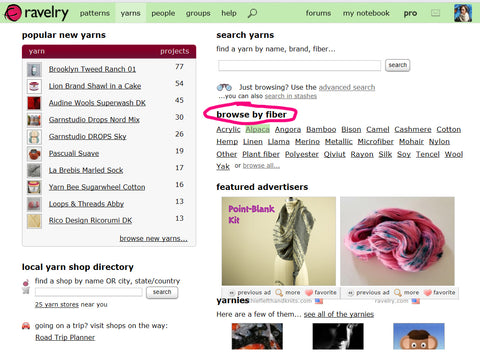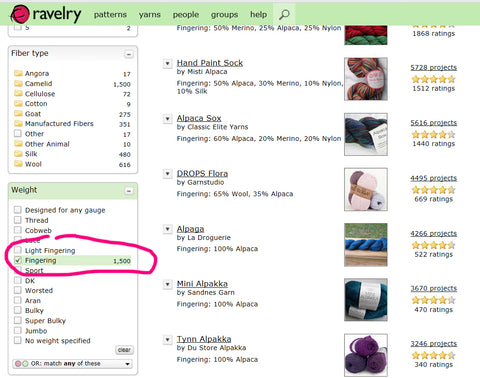Dear Knitter
an advice column for anyone seeking knitting, crochet or crafting advice.

~ life's problems solved here ~
Follow @dearknitter on Instagram
If you have a question and/or need advice please send me your questions or problems using the contact form on the right hand bottom corner of this site. Please note: I am not a certified counselor or physiologist, I just give crafting advice.
Please note; posts are archived, per topic in the drop down for easy searching.
May 30, 2018
DEAR KNITTER: I want to make the Deep Vee Tee but I am modest and prefer to make the back Vee not so deep. Can we modify it? If so, how. – TAKING THE PLUNGE
DEAR TAKING THE PLUNGE: Yes, of course, modifying my designs is a solid yes; I always encourage knitters to make the projects their own. Here are some tips on how to modify the Deep Vee Tee:
- IMPORTANT: In the end, it is imperative to have the front & back the same length and to have the same amount of shoulder stitches, so keep track of everything you do, especially row count!
- If you want a high back, and forget the plunge all together, follow the front side making two fronts.
- If you want the back to have a lower neck, but not as low as the pattern, again, I would follow the front directions & shaping but start the shaping/split sooner than the front suggests. Once you finish the shaping, you will need to add extra non-shaping rows to match the length.
- TIP: It might be a good idea to knit the front as is, first. After, knit the back using the front as a reference/guide to where you want to start the Vee shaping and how many extra rows you need to match the front length.
May 23, 2018
DEAR KNITTER: If I have a 5oz ball of fingering weight yarn and no ball band, how do I figure out the yardage? -- GOING THE DISTANCE
DEAR GOING THE DISTANCE: The first thing I would do, go onto Ravelry and search for a yarns that is fingering weight and in the same fiber as your mystery yarn. It is important to match the fiber, as fibers weight differently; alpaca, for instance, will be heavier than a merino which means you would have less yardage on an alpaca skein than a merino skein that weighs the same.
Note: on Ravelry, once you are in the yarns tab, I would browse by fiber and then by weight to find a match.


Once you found a similar yarn (fiber and gauge) follow these steps:
- Look at the how many yards there are per 50g on your sample ball (ex: 189 yards/50g)
- Convert 5oz to grams = 141.75g
- Divide 141.75 with 50g. 141.75 / 50 = 2.835
- Multiply the answer from step 3 by yardage on sample ball: 2.835 x 189 = 535.82
- The answer from step 4 is the approximate yardage your 5oz mystery skein has: 535.82 yards.
May 16, 2018
DEAR KNITTER: I purchased your Bandana Love pattern and want to make one using the colorwork add-on chart. Do you recommend catching the floats between stitches? Or, carrying them across all stitches freely? – IT’S A STRETCH
DEAR IT’S A STRETCH: Either technique is totally fine. As a rule, I used to never carry a float further than 3 stitches without catching it; however, I recently decided I really love the look of NOT catching the floats and carrying them across all the stitches no matter the stitch count. I find the look to be quite beautiful and almost a reverse of the “good side” pattern. When I used to catch the floats, the contrast color sometimes came through the front and the back never looked as pretty.
TIP: with either technique, be sure to carry your floats loosely across all stitches; you can always tighten them but can never loosen them after. A good soak in lanolin is also a great way to even out your stitches. Here are 2 images of the backside of Bandana Love Cowl, add-on #1 & #2. In both cases, I carried the floats across all stitches and did not catch them between.




May 09, 2018
DEAR KNITTER: I am a super loose knitter, I have been taught not to pull the yarn because it can cause uneven stitches. How do I fix my tension? – TUG OF WAR
DEAR TUG OF WAR: The amazing thing about knitting, is there is no one way or a set “right” way to do it; everyone knits the way it is comfortable for them (next time you look around at other knitters knitting, check out how they hold the yarn and the motion their hands and arms move). The reason all patterns and yarn labels have gauges, is to allow knitters to accommodate their personal technique and tension to a universal pattern. So, if you are a loose knitter, chances are, you will have to go down a needle size to meet gauge; subsequently, if you are a tight knitter, you will probably have to go up a needle size or two.
I definitely agree with how you have been taught, extra pulling or tugging after knitting the stitch can cause uneven stitches, much like letting go of the yarn between stitches can also have this effect as well. The one place you may consider pulling the yarn a bit extra, to get your tension a bit tighter, would be during the motion of wrapping your stitch as you work it. If you have more tension from yarn ball to the yarn around the needle, you will naturally make a tighter stitch. Holding the yarn in the same tension as you come through the stitch is also important for tension control.
To prefect any skill, it takes time and practice. If you can stay in a fluid motion from holding your yarn to wrapping your stitches, you will be able to perfect your craft and control your stitch tension.
May 2, 2018
DEAR KNITTER: When you design, do you write out your patterns as you knit or write out a pattern and then knit? -- CURIOUS DESIGNER
DEAR CURIOUS DESIGNER: I never put myself in a box or have a routine when I design. For me, the process is different every time. Sometimes I have an idea that is pretty solid and I will start to swatch and write out the whole pattern from start to finish and then knit it; changing things as I go, test knitting my idea. Other times, I have vague ideas about design features and I allow myself to create as I go; this way of design is less structured and I find myself thinking about new techniques and ideas to bring to the idea even when I am not knitting. Both design styles are good; I don’t think about which one I will use before I design, I naturally just pick one over the other. I try not to over think the process of designing; rather, I just let myself design naturally without boundaries on style, having a set routine, or what tools I will use, what pen, notebook is best. Those things are just esthetics and however I can translate my idea to paper/computer/knit, works. I do however ALWAYS write down or draw out ideas and list stitches. I do not pretend that I will remember anything, even for a second.


